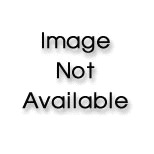
Concept explainers
Finding the volume of a flask.
A student obtained a clean, dry glass-stoppered flask. She weighed the flask and stopper on an analytical balance and found the total mass to be
a. First we need to obtain the mass of the water in the flask. This is found by recognizing that the mass of a sample is equal to the sum of the masses of its parts. For the filled, stoppered flask:
Many mass and volume measurements in chemistry are made by the method used in la. This method is called measuring by difference, and is a very useful one.
b. The density of a pure substance is equal to its mass divided by its volume:
The volume of the flask is equal to the volume of the water it contains. Since we know the mass and density of the water, we can find its volume and that of the flask. Make the necessary calculation.
Interpretation:
The volume of the stoppered flask which contains water with density equals to
Concept introduction:
The division of mass of a substance to its volume is known as density of that substance. The expression that is used to represent the density of any substance is given below.
The SI unit of density is
Answer to Problem 1ASA
The volume of the stoppered flask which contains water with density equals to
Explanation of Solution
The given total mass of empty flask with its stopper is
The observed mass of the stoppered flask when it is filled with water is
The density of water is
The mass of water
Firstly, the mass of water that is present in the stoppered flask must be calculated.
The mass of the filled stoppered flask is calculated by the expression given below.
The above expression is rearranged to calculate the mass of water that is present in the stoppered flask as given below.
Substitute the values of empty flask and filled flask in the above expression.
Thus, the mass of water is
The density of any substance is calculated by the expression given below.
The above expression is rearranged to calculate the volume of water that is present in the stoppered flask as given below.
Substitute the values of mass and density of water in the above expression.
So, the volume of water is
As, the volume of flask is equal to the volume of water present in it, therefore, the volume of stoppered flask is also equal to
The volume of the stoppered flask that contains water is
Want to see more full solutions like this?
Chapter 1 Solutions
CHM 111/112 LAB MANUAL >C<
- What is the final product when D-galactose reacts with hydroxylamine?arrow_forwardIndicate the formula of the product obtained by reacting methyl 5-chloro-5-oxopentanoate with 1 mole of 4-penten-1-ylmagnesium bromide.arrow_forwardIn the two chair conformations of glucose, the most stable is the one with all the OH groups in the equatorial position. Is this correct?arrow_forward
- please help me with my homeworkarrow_forwardhelparrow_forwardThe temperature on a sample of pure X held at 1.25 atm and -54. °C is increased until the sample boils. The temperature is then held constant and the pressure is decreased by 0.42 atm. On the phase diagram below draw a path that shows this set of changes. pressure (atm) 2 0 0 200 400 temperature (K) Xarrow_forward
- QUESTION: Answer Question 5: 'Calculating standard error of regression' STEP 1 by filling in all the empty green boxes *The values are all provided in the photo attached*arrow_forwardpressure (atm) 3 The pressure on a sample of pure X held at 47. °C and 0.88 atm is increased until the sample condenses. The pressure is then held constant and the temperature is decreased by 82. °C. On the phase diagram below draw a path that shows this set of changes. 0 0 200 temperature (K) 400 аarrow_forwarder your payment details | bar xb Home | bartleby x + aleksogi/x/isl.exe/1o u-lgNskr7j8P3jH-1Qs_pBanHhviTCeeBZbufuBYT0Hz7m7D3ZcW81NC1d8Kzb4srFik1OUFhKMUXzhGpw7k1 O States of Matter Sketching a described thermodynamic change on a phase diagram 0/5 The pressure on a sample of pure X held at 47. °C and 0.88 atm is increased until the sample condenses. The pressure is then held constant and the temperature is decreased by 82. °C. On the phase diagram below draw a path that shows this set of changes. pressure (atm) 1 3- 0- 0 200 Explanation Check temperature (K) 400 X Q Search L G 2025 McGraw Hill LLC. All Rights Reserved Terms of Use Privacy Cearrow_forward
 ChemistryChemistryISBN:9781305957404Author:Steven S. Zumdahl, Susan A. Zumdahl, Donald J. DeCostePublisher:Cengage Learning
ChemistryChemistryISBN:9781305957404Author:Steven S. Zumdahl, Susan A. Zumdahl, Donald J. DeCostePublisher:Cengage Learning
 Chemistry: The Molecular ScienceChemistryISBN:9781285199047Author:John W. Moore, Conrad L. StanitskiPublisher:Cengage Learning
Chemistry: The Molecular ScienceChemistryISBN:9781285199047Author:John W. Moore, Conrad L. StanitskiPublisher:Cengage Learning Chemistry for Engineering StudentsChemistryISBN:9781337398909Author:Lawrence S. Brown, Tom HolmePublisher:Cengage Learning
Chemistry for Engineering StudentsChemistryISBN:9781337398909Author:Lawrence S. Brown, Tom HolmePublisher:Cengage Learning



